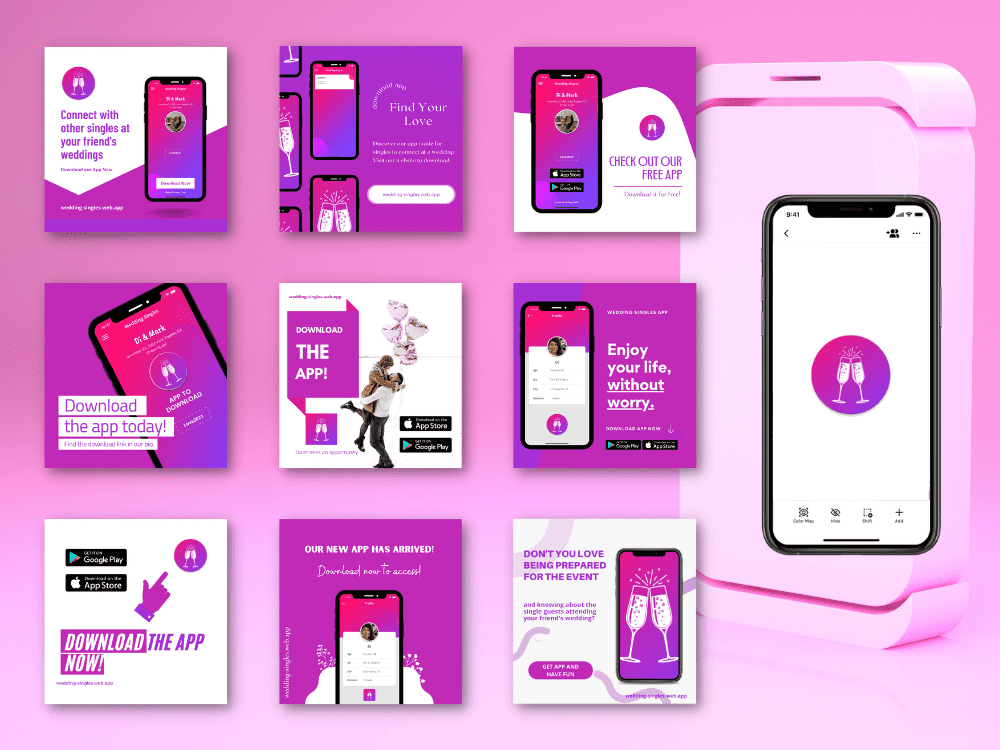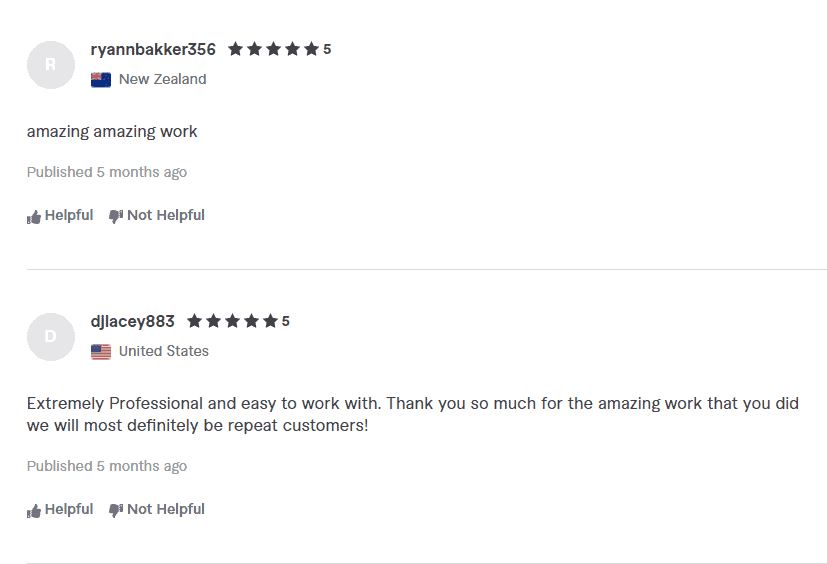
In this digital era we’re all living in, learning how to become a content creator and actually working as a creator, can be very lucrative.
You’ve probably heard of freelancers working remotely, earning money online every month and enjoying life.
A lot of them (if not most of them) are content creators!
So if you like to learn how to become a content creator, this post will tell you everything you need to know about it.
This post contains affiliate links, which means I may receive a small commission, at no cost to you, if you make a purchase through a link.
First Let me say that…
Yes, this is something you can do.
Before you start thinking that you’re not qualified or that this is gonna take a long time, I am here to tell you:
- You do not need any qualification to become a content creator
- It won’t take years to learn
- There is a huge global demand for content creators so you’re not late at all
As a content creator myself, here is everything i learned:
When I decided to work as a content creator, I focused mainly on three things:
1. Sort out what companies need to publish content frequently
2. Learn how to become a content creator in order to have an offer for these companies
3. Craft a strategy on how to approach turn prospects into clients
So first you will have to ask yourself:
A) What is the market you would like to focus on?
Let’s say you want to become a content creator for e-Commerce brands.
You will have to take a look at some of their websites and their social media pages and think:
B) Do these brands need a content creator?
And if the answer is “yes”:
C) On what social media platforms are these brands focusing on?
If they’re mainly focusing on YouTube, they’re interested in video content.
If they’re focusing on Facebook and Instagram, they’re probably looking for a content creator who can create both graphic and video content.
So the conclusion is:
There is definitely a market you can penetrate!
How can you learn the skills and become a content creator to satisfy the needs of these brands?
The first step is to start looking at yourself as a business, from day one!
And as any business out there, growth comes with small and consistent steps.
What does this mean for you?
It means that, in the beginning, in order to make the numbers every month, you will find yourself working with small fees and many different clients.
Under these conditions, delivering content fast becomes important!
Therefore you will need a tool that allows you to create high quality content, without taking too much time from you.
I just like many of the freelancers out there use Canva.
Canva is an online platform that allows freelancers to create anything from logo to complete brand design.
It’s easy to use, rich in templates for any type of work, from social media posts designs to brochures.
And most importantly, it helps you deliver high quality work for your clients in no time!
I have learned how to use Canva by doing, but if you want to watch some online courses about it, Skillshare has some Master courses updated with the latest changes as well.
One main thing we are strict with, is Brand Identity.
If the client wants some improvements then we might be able to brainstorm some ideas with them.
Otherwise, just respect their main brand colors, fonts, style, and design everything around that.
You do not need to reinvent the wheel. Use existing templates, but do the right changes.

Here is some work I have done for my clients: All done with Canva, in a very short amount of time.
And you can notice from the reviews that they absolutely love the work:

So as you can see, learning how to become a content creator for a brand isn’t that hard.
You might be wondering, if this is so easy, then where is struggle?
The hardest part is to actually get the clients.
When it comes to getting clients as a content creator, there are two paths you can choose:
Path A: Operate as a generalist, working for all sorts of brands out there
Path B: Focus in a specific niche or a market.
I personally do both. I have positioned myself as generalist and from time to time I focus in specific niches also.
Let’s explore both of them:
Operating as a generalist Content Creator
The advantage when it comes to operating as generalist is that, you can look and therefore find clients in freelancing platforms such as Upwork, Fiverr, etc.
I personally have been using Fiverr.
Fiverr is one of the biggest marketplaces out there when it comes to freelancing.
Freelancers and businesses meet on Fiverr everyday and do business together.
Just understand that every start can be a little bit difficult, so you have to be patient and consistent, until you see things starting to grow.
To learn more about my success, you may want to check out my article on how to be successful on Fiverr.
Everyone starts small, let’s say with $50 orders, for a few social media posts.
But then you can also offer monthly packages for managing their social media accounts.
And that’s when you start charging higher prices such as $700 or even more.
On Fiverr, the buyers reach out to you and ask you for your services.
They will tell you about their needs and focuses and you can discuss with them and tell them about your offer and maybe even showcase some of your work, to see if they like them.
If they do, you will be able to sell your services to them and make good business for the months to come.
A Content Creator For a specific niche or a market
Here you have to go out there in the internet ocean and fish for clients yourself.
This method is the hardest but also the more rewarding one, because you can charge higher prices.
To find clients you will have to build a prospect list organically. And then build an organic outreach plan.
First step is to prepare a short and warm but professional message model, that you will be using to approach your potential clients .
You should first, craft an offer message for the specific market or a niche that you are now convinced that you want to target.
The offer “formula” must be:
I help X , achieve Y through Z.
X= Type of companies
Y= Market’s needs and desires
Z= Your Offer
Example:
“I help e-commerce brands grow their social media presence by creating engaging content for Instagram & Facebook.“
And since I am mentioning “e-commerce” as a niche already, we will use this one as an example to simplify things.
Let’s say you want to reach out to e-Commerce brands to offer your services to them.
You need to build 3 types of prospect lists:
1. E-Mail list
2. Facebook list
3. LinkedIn list
Let’s go through all three of them.
1. E-mail List And Organic Outreach:
First thing you need to do, is a Google search for new e-commerce businesses, spot their websites, and make a list of them.
The next step is to find the founder or CEO e-mail of that brand. This can be done by just googling their name and website email.
For example: [email protected]
If there are pages on Google that contain their e-mail, write those addresses down.
Once you have a good list, is time to send e-mails out, daily.
Write every e-mail yourself, do not copy paste. They must look and feel natural and not spammy.
Here is an example:
“Hey James,
Noticed that you are in the e-commerce space and I wanted to reach out. I help e-commerce brands grow their social media presence by creating engaging content for Instagram & Facebook.
I have taken a look at your social media pages and there is something I’d love to show you that can improve your presence and boost your results.
When suits for a 15 minutes chat?“
Send out 10 e-mails a day, for 30 days. Stay consistent. Do not skip even a single day.
You can always use a free Google Chrome extension called Mailtracker, to track e-mail openings and performance.
2. Facebook List and Organic Outreach
First, clean your Facebook profile and make it look friendly and social, but also professional.
Avoid photos at parties etc. Your prospects need to see that you mean business, just like any other business person.
Make a post every two or three days about your work or about designs you have done that are worth sharing.
It’s a great idea to showcase your work and therefore you should do it regularly.
Next, start searching for Facebook groups about your niche.
Example: Facebook groups about Shopify Owners, or other e-Commerce related topics.
Request access to groups that seem interesting and active.
Once you’re accepted, start inviting people who seem to be e-commerce shop owners as Friends.
Only after they accept your friend request, send them something similiar to the message model we talked about earlier.
Wait for them to get back to you.
3. Linkedin List and Organic Outreach:
Last but not least, Linkedin. Linkedin is a very powerful tool, but has to be used properly.
Do not send connection requests to anyone out there. Only send them to your potential customers.
Reach out to small companies only, with a 1-10 employees.
Click in the employees list and see if there is the CEO or the founder’s Linkedin profile.
If yes, send a connection request.
Once they’ve accepted it, send them a message similar to the one we talked about earlier.
For Linkedin there’s also an even more sophisticated and powerful tool, called Sales Navigator.
Sales Navigator isn’t for free, even though they do offer a 30-day free trial, at the time this article is being written.
Next steps:
Keep on monitoring all the three channels (Email, Facebook & Linkedin) and collect feedback when it comes to the responses you are receiving.
If let’s say, you are being replied more on Facebook than in any other platform, then focus all your energies and efforts on Facebook only.
It means that your target audience is more present there, and that’s where your future clients are.
When you get a message from one of the owners or founders and they say they would like to talk to you, leave a meeting call appointment with them.
I personally use Calendly, it is an amazing appointment scheduling platform and it also has a free plan!
When the meeting time arrives, I suggest you to use audio calls only.
It keeps both of the parties away from distractions and you can focus on making the sale, while they can focus on what you have to offer and decide how good that offer is for them.
Conclusion
This is more or less how to become a content creator and find clients online.
You might have noticed that this post focuses more on how to sell your services as a content creator rather than how to actually create content or become a content creator.
And that is for a good reason:
We live in the era of digital abundance and we’re surrounded by digital tools.
Tools such as Canva, or other tools and mechanisms help us make the actual work easier, so we can focus on growing our client list and making sure that they remain satisfied and keep on coming back.
For example, did you know that there are freelancers who do not even do the work, but outsource it to other content creators, while they keep on getting paid by their clients?
I hope you stick around cause I got a lot of stuff I wanna share with you, and you are gonna absolutely love it!
- Freelance Writing Niches: Finding Your Perfect Fit in 2024 - November 20, 2024
- Scheduling Your Freelance Life – Work Smarter, Live Better - November 19, 2024
- How to Become a Freelance Accountant - November 19, 2024




Thank you so much!
It was really a very helpful information.
I hope one day I can be a good content creator like you.
Glad to know it helped you! For more help write at: [email protected]